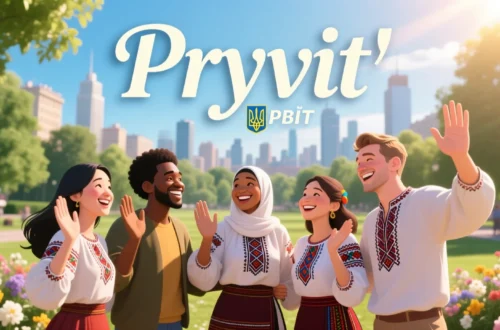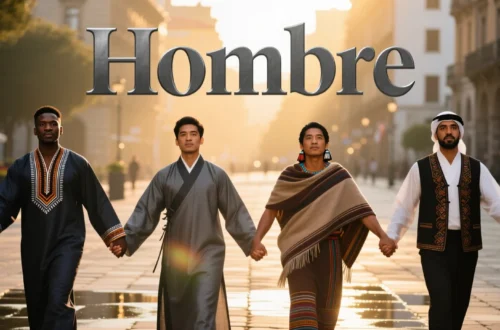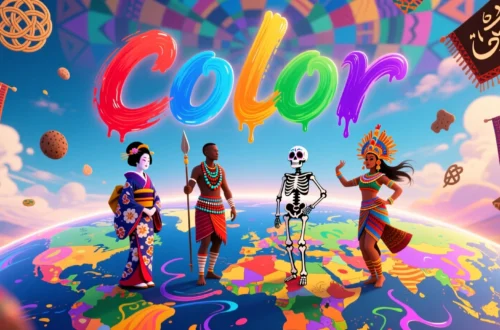Picture a moment in a vibrant Rio de Janeiro café, where a friend nods enthusiastically and says “sim” to confirm a weekend plan. That single word, “yes,” carries a universal pulse of agreement, yet it resonates differently across cultures.
Whether it’s a confident “hai” in a Tokyo dojo or a warm “ndiyo” in a Nairobi market, the term for “yes” captures humanity’s shared desire to affirm and connect, flavored by each culture’s unique spirit.
Let’s embark on a global journey to discover how people express “yes” in various languages and what these words reveal about their societies.
Reference Table: “Yes” in Different Languages
| Language | Word/Phrase | Cultural/Linguistic Insight |
|---|---|---|
| French | Oui | A concise affirmation, used formally and casually in France. |
| Spanish | Sí | A versatile term, often spoken with enthusiasm in Spain and Latin America. |
| Italian | Sì | Conveys agreement with a melodic tone, common in Italy. |
| German | Ja | A straightforward affirmation, reflecting German directness. |
| Mandarin | Shì (是) | Means “is” or “yes,” used for agreement in China. |
| Hindi | Haan | A warm, affirmative response, common in India’s lively conversations. |
| Japanese | Hai (はい) | A polite affirmation, often used to show respect in Japan. |
| Korean | Ne (네) | A formal “yes,” reflecting Korea’s emphasis on politeness. |
| Arabic | Na‘am (نعم) | Means “yes” or “indeed,” used across 20+ countries with a courteous tone. |
| Swahili | Ndiyo | Means “it is so,” a positive affirmation in East Africa. |
| Zulu | Yebo | A lively “yes,” often used with enthusiasm in South Africa. |
| Yoruba | Bẹẹ ni | Means “it is so,” a warm affirmation in Nigeria. |
| Maori | Āe | A simple “yes,” reflecting harmony in New Zealand’s Maori culture. |
| Hawaiian | ʻAe | Means “yes,” tied to the welcoming spirit of aloha. |
| Cherokee | Vv | A concise affirmation, used in Native American communities. |
European Languages: Affirmation with Cultural Flair
European languages express “yes” with terms that blend agreement and cultural nuance. For instance, in French, “oui” is a versatile affirmation, used in both formal Paris boardrooms and casual café chats, reflecting France’s love for clarity. Meanwhile, Spanish speakers say “sí,” often with a vibrant tone, heard in lively markets across Spain and Latin America. Additionally, Italian uses “sì,” spoken with a melodic cadence that mirrors Italy’s expressive culture. In German, “ja” is direct and concise, aligning with Germany’s straightforward communication style. Thus, these terms showcase Europe’s mix of passion and pragmatism, from the poetic Italian “sì” to the no-nonsense German “ja.”
Asian Languages: Harmony in Agreement
Asia’s linguistic diversity shapes unique expressions of “yes,” often tied to respect and harmony. For example, in Mandarin, “shì” (is) serves as a concise “yes,” reflecting China’s focus on simplicity and clarity in agreement. In Hindi, “haan” is a warm, enthusiastic affirmation, heard in India’s bustling streets during heartfelt conversations. Similarly, Japanese uses “hai,” a polite term that conveys respect, often spoken in Tokyo’s formal settings. In Korean, “ne” is a courteous “yes,” aligning with South Korea’s emphasis on etiquette. Finally, Arabic’s “na‘am,” used across over 20 countries like Egypt and Saudi Arabia, carries a formal, courteous tone, rooted in the region’s tradition of hospitality. These terms highlight Asia’s spectrum, from polite affirmations to warm, expressive agreements.
African Languages: Affirmation in Community
In African languages, “yes” often reflects communal positivity and connection. For instance, Swahili, spoken in over 20 countries like Kenya and Tanzania, uses “ndiyo” (it is so), a versatile term heard in vibrant markets or community gatherings. In Zulu, “yebo” is a lively “yes” in South Africa, often paired with a smile or enthusiastic nod. Similarly, Yoruba’s “bẹẹ ni” (it is so) in Nigeria conveys warmth and agreement, reflecting the culture’s communal spirit. These terms, used across diverse African settings, emphasize shared understanding and joy, often celebrated in social contexts.
Indigenous & Island Languages: Simple Bonds of Affirmation
Indigenous and island languages express “yes” with simplicity and connection. For example, Maori in New Zealand uses “āe,” a straightforward term that reflects the culture’s focus on harmony and agreement. In Hawaiian, “ʻae” carries the welcoming spirit of aloha, used in warm affirmations. Similarly, Cherokee’s “vv” is a concise “yes,” used in Native American communities to signal agreement. In Samoan, “ioe” reflects the Pacific’s communal approach, often used in group settings. Across these cultures, from New Zealand to the Cherokee Nation, “yes” emphasizes unity and simplicity, often tied to shared traditions.
Cultural Insights: The Evolution of Affirmation
Words for “yes” have evolved alongside cultural values. For instance, the French “oui” traces back to Latin “hoc ille” (this is it), reflecting centuries of linguistic refinement. In Arabic, “na‘am” has roots in medieval texts, symbolizing courteous agreement. Moreover, in African languages like Swahili, “ndiyo” reflects trade-era exchanges, emphasizing consensus. In Asia, terms like “hai” and “ne” align with cultural values of respect and harmony, shaped by philosophies like Confucianism. These words carry histories of trade, migration, and cultural exchange, uniting people through shared affirmations across time.
Proverbs and Sayings: Wisdom of Agreement
- French: “Un oui sincère vaut mille mots.” (A sincere yes is worth a thousand words.) – Highlights the power of agreement.
- Hindi: “Haan se dil milta hai.” (A yes connects hearts.) – Emphasizes emotional bonds in agreement.
- Swahili: “Ndiyo ni daraja ya maelewano.” (Yes is the bridge to understanding.) – Ties affirmation to harmony.
- Japanese: “Hai wa kokoro o hiraku.” (Yes opens the heart.) – Reflects respect in agreement.
- Yoruba: “Bẹẹ ni, ayọ de.” (It is so, joy arrives.) – Links affirmation to happiness.
FAQs
Why do some words for “yes” sound similar?
Shared linguistic roots (e.g., Indo-European languages like French and Spanish) and cultural exchanges (e.g., Arabic’s influence on Swahili) create similarities.
What’s the oldest term for “yes”?
French “oui,” derived from Latin “hoc ille” (circa 1st century BCE), is among the earliest recorded affirmations.
How do cultures shape the term’s use?
Collectivist cultures (e.g., African, Indigenous) use “yes” to foster group harmony, while individualistic cultures (e.g., European) focus on personal agreement.
Conclusion
From “sí” in Spain to “ndiyo” in Tanzania, the word for “yes” weaves a global thread of agreement and connection. Each term, whether the polite “hai” in Japanese or the warm “āe” in Maori, reflects cultural values while celebrating humanity’s shared need to affirm. Consequently, these words remind us that a simple “yes” can unite people across borders, creating bonds of understanding. How do you say “yes” in your language, and what does it mean to you? Share your stories below—we’re eager to hear your voice!






